Key takeaways
- Kant’s philosophy explores the limits of human reason, bridging rationalism and empiricism, and prompting deep reflections on knowledge and understanding.
- Key concepts like “a priori” vs. “a posteriori” and the mind as an active organizer reshape our comprehension of experience.
- Effective study strategies include breaking down texts, engaging in discussions, and using secondary sources for clarification, transforming the learning experience.
- Applying Kant’s ideas in education fosters critical thinking and personal connections, emphasizing the relevance of philosophy in everyday life.
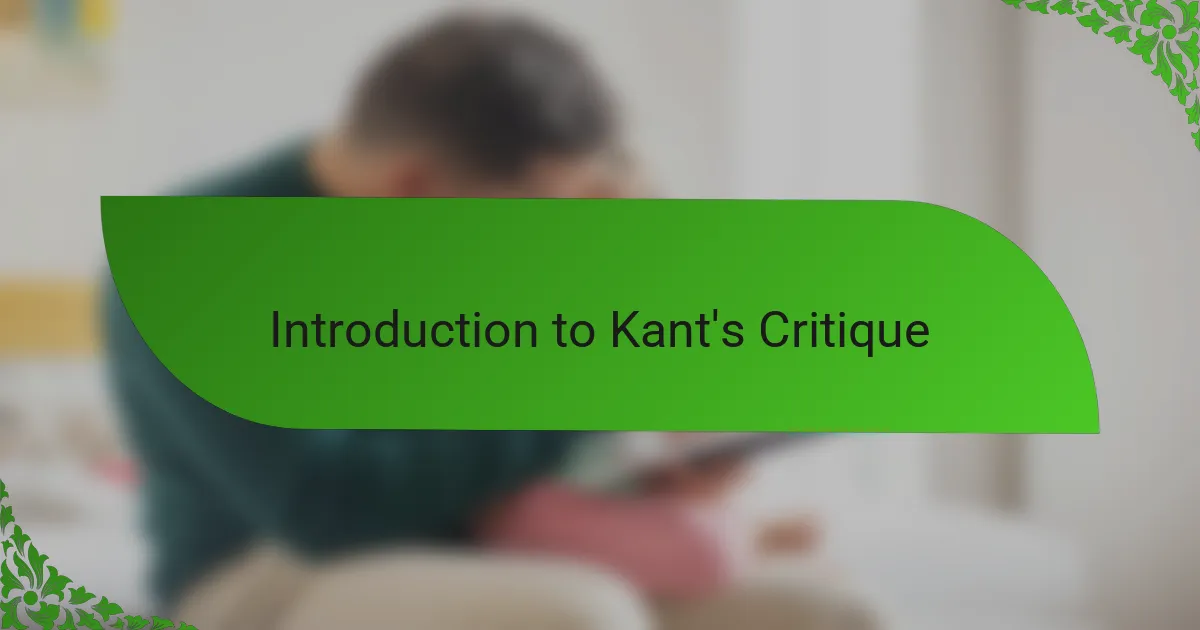
Introduction to Kant’s Critique
Kant’s Critique, especially the “Critique of Pure Reason,” often feels like entering a dense forest—initially confusing but deeply rewarding once you start to find your path. When I first approached it, I asked myself, “How can one text reshape the entire landscape of philosophy?” That question kept me eager to uncover how Kant explored the limits and capabilities of human reason.
What struck me most was Kant’s attempt to bridge the gap between rationalism and empiricism. I remember feeling both challenged and inspired as I realized he wasn’t rejecting previous schools of thought but rather carefully examining how our understanding actually works. This critical approach made me reflect on my own assumptions about knowledge and experience.
Have you ever wondered why we trust certain knowledge as valid or certain experiences as real? Kant’s critique tackles precisely that by probing the conditions that make knowledge possible. His work invites us to think about thinking itself, which, in my view, is both humbling and exhilarating.
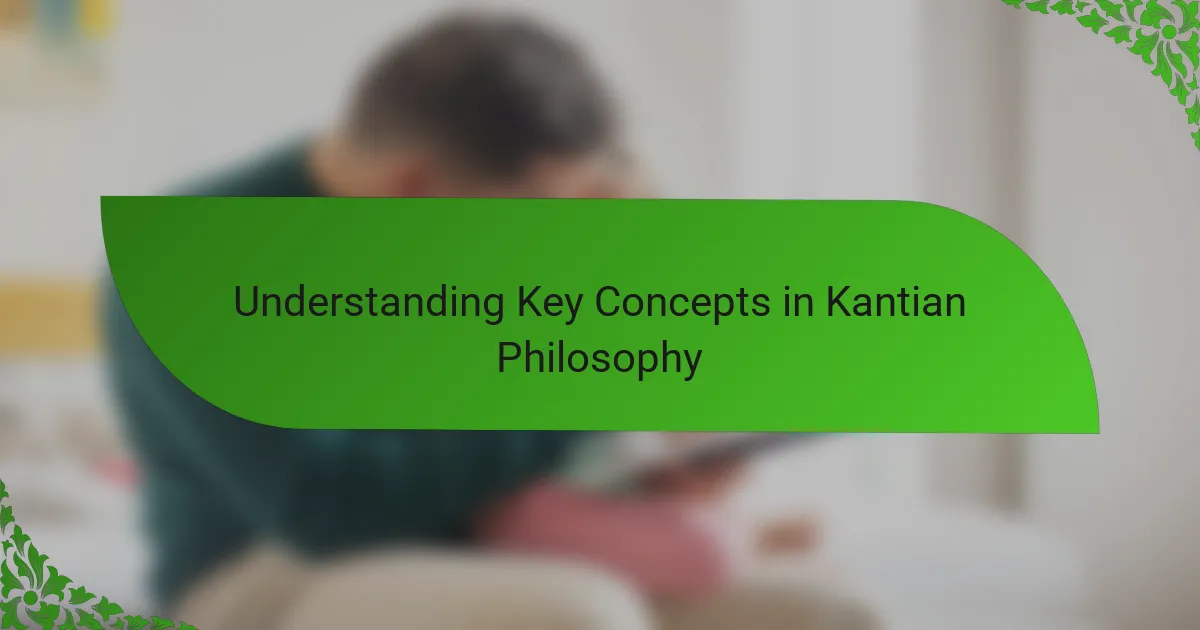
Understanding Key Concepts in Kantian Philosophy
Grasping key concepts in Kantian philosophy wasn’t easy for me at first. Terms like “a priori” and “a posteriori” sounded dry, but once I realized they’re about knowledge that comes before experience versus knowledge gained through experience, things clicked. It felt like uncovering a hidden map that explains how we actually know what we know.
One idea that really stuck with me is Kant’s notion of the “categories of understanding.” I used to think my mind just passively received information, but Kant made me see it as an active organizer, shaping raw data into coherent experience. It’s a bit like how a photographer decides the focus and framing of a shot—suddenly, knowledge felt more dynamic and personal.
Have you ever considered what makes an experience meaningful rather than just a jumble of sensations? Kant’s concept of the “transcendental conditions” helped me appreciate that. These conditions aren’t things you see directly but the invisible rules our minds follow to make sense of the world. Realizing this was like stepping behind the curtain and witnessing the mechanics of thought itself.
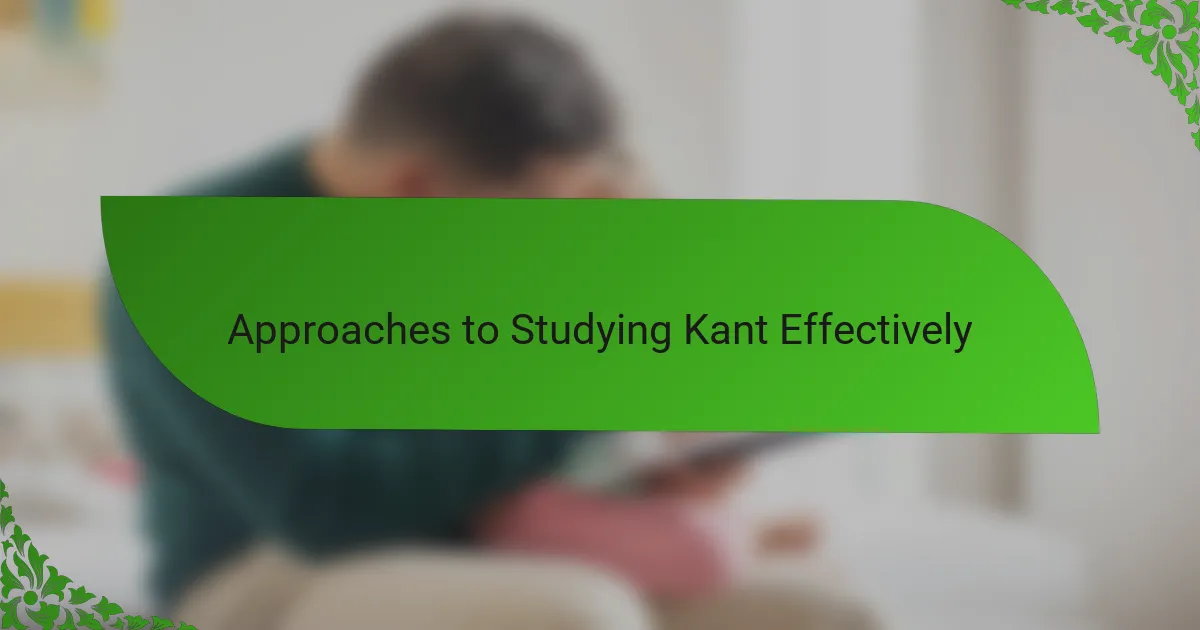
Approaches to Studying Kant Effectively
Diving into Kant’s work, I found that breaking the text into smaller sections made all the difference. Instead of trying to swallow the entire “Critique” at once, I focused on one concept at a time, jotting down my questions and reflections. Have you ever tried reading a tough book that way? It turns the task from overwhelming to manageable and even exciting.
Another approach that helped me was discussing Kant with others who were also exploring his ideas. Hearing different perspectives made me realize that confusion is part of the process—and that no one has all the answers right away. Sometimes, a simple conversation revealed insights that reading alone never would have.
I also leaned heavily on secondary sources—commentaries and guides—to clarify difficult passages. While some purists might frown on this, I think of these resources as helpful ladders, giving me a better vantage point to understand Kant’s complex arguments. Wouldn’t you agree that sometimes a little guidance can open the doors to deeper comprehension?
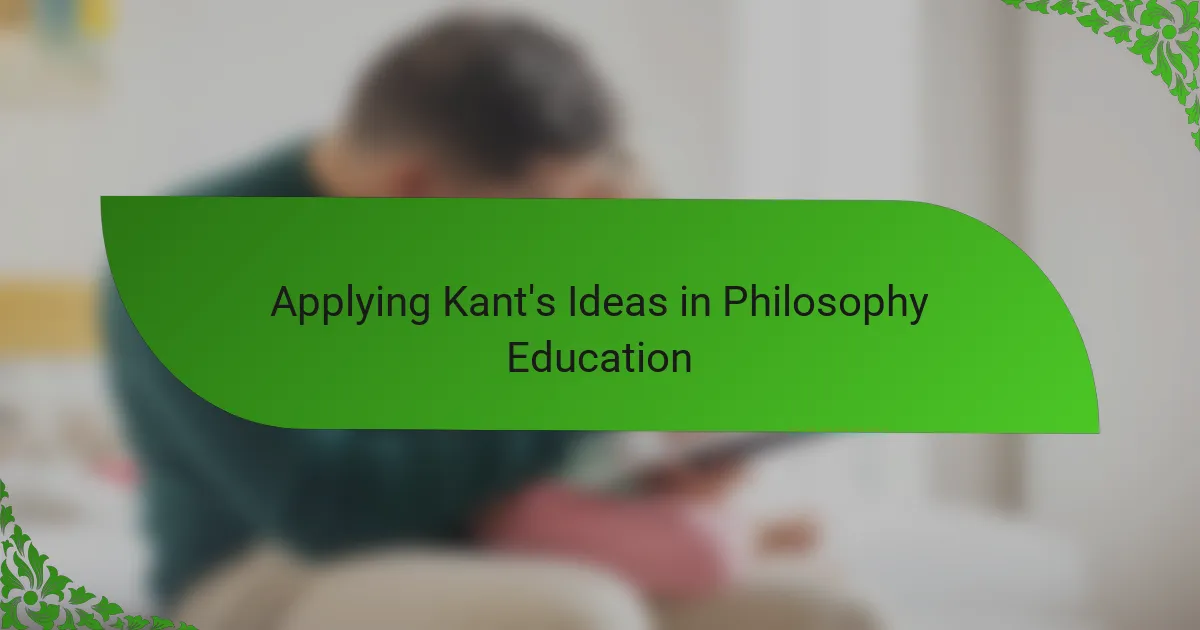
Applying Kant’s Ideas in Philosophy Education
Applying Kant’s ideas in philosophy education felt like unlocking a new toolkit for teaching critical thinking. When I started incorporating his emphasis on the limits of reason, I noticed students became more thoughtful about where their knowledge truly comes from, rather than just memorizing facts. Have you ever watched learners shift from passive receivers to active questioners? That transformation is powerful.
I also found that introducing Kant’s concept of the mind as an organizer helped students connect abstract ideas to their own experiences. For instance, when I asked them to reflect on how their perceptions shape what they believe, the discussions became more lively and personal. It reminded me how philosophy isn’t just theory—it’s a practice of self-awareness.
One challenge, though, was keeping Kant accessible without oversimplifying his dense arguments. I tried breaking down his ideas into everyday examples, like comparing the categories of understanding to filters on a camera lens. This helped, but it also made me realize how deeply Kant’s framework can change the way we think about education itself. Doesn’t that suggest philosophy can reshape not only minds but the very methods we use to teach?
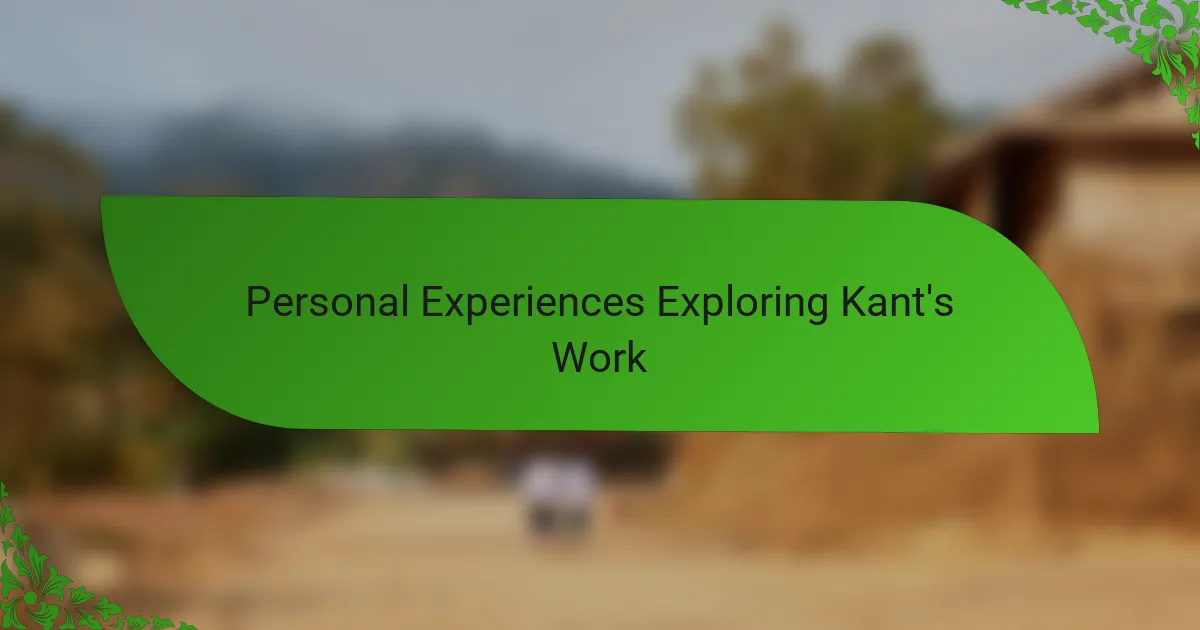
Personal Experiences Exploring Kant’s Work
Exploring Kant’s work felt like embarking on a philosophical journey that challenged not only my intellect but also my patience. I remember sitting with the “Critique of Pure Reason” late one night, grappling with dense passages and wondering if I’d ever grasp his meaning. Have you ever experienced that mix of frustration and fascination? For me, moments of clarity—when a concept finally clicked—were incredibly rewarding and kept me going.
There was a particular passage that made me pause and rethink how I understand knowledge itself. Kant’s idea that the mind actively shapes experience wasn’t just abstract philosophy; it felt deeply personal, almost like discovering a hidden part of how I think every day. That realization sparked a genuine excitement, as if I’d unlocked a secret about my own mind.
Discussing Kant with friends was another turning point. I found that sharing my confusions and hearing their perspectives illuminated parts I had missed. Isn’t it interesting how philosophical exploration often becomes richer through dialogue? For me, those conversations made Kant’s complex arguments feel less intimidating and more alive.
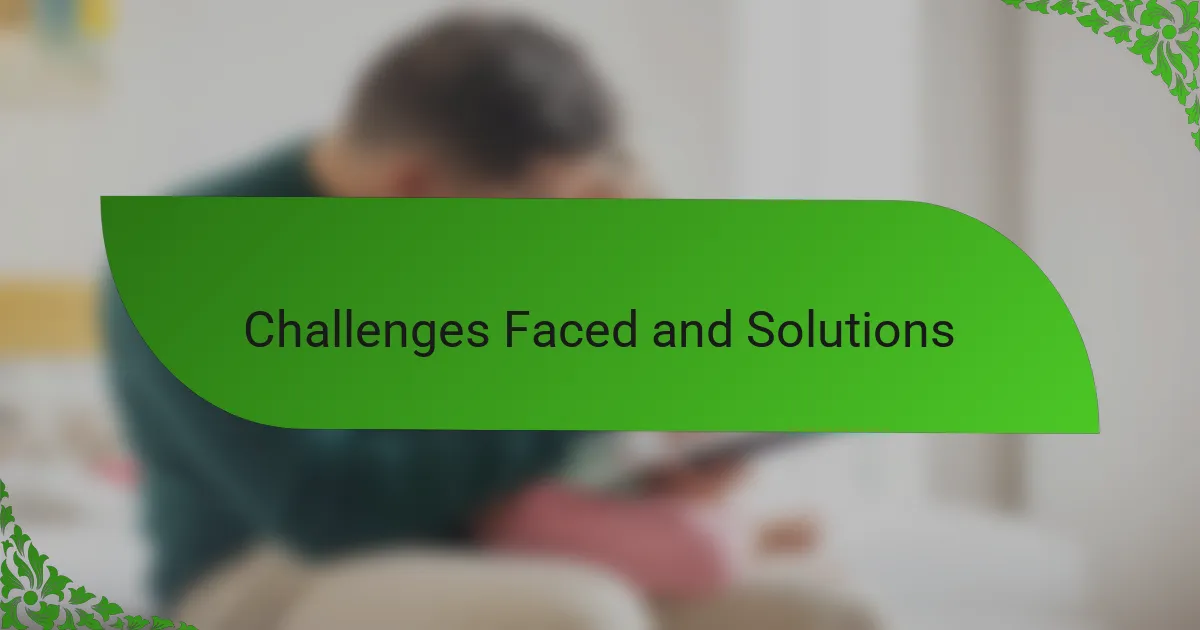
Challenges Faced and Solutions
The first hurdle I faced was grappling with Kant’s notoriously dense language. I remember staring at a single paragraph for what felt like hours, trying to tease apart his meaning. Have you ever felt that mental fog where every sentence demands twice the effort? What helped me was patiently rephrasing his claims in my own words—even if it took several tries, it made the ideas more approachable.
Another challenge was resisting the urge to rush through the text. Kant’s work rewards slow, careful reading, but my initial impatience led to frustration. I found that taking short breaks and revisiting the material with fresh eyes made a huge difference. Have you noticed how stepping away from a tough problem can suddenly make things clearer? That pause often brought insights I missed on the first pass.
Finally, connecting abstract concepts to real-life examples wasn’t easy at first. I struggled to relate Kant’s categories and transcendental conditions to anything familiar. To overcome this, I tried analogies from everyday life—like comparing the mind’s organizing role to how a librarian sorts books. This made all the difference in grasping his ideas as living tools rather than cold theory. Wouldn’t you agree that philosophy becomes more meaningful when it resonates with your own experience?
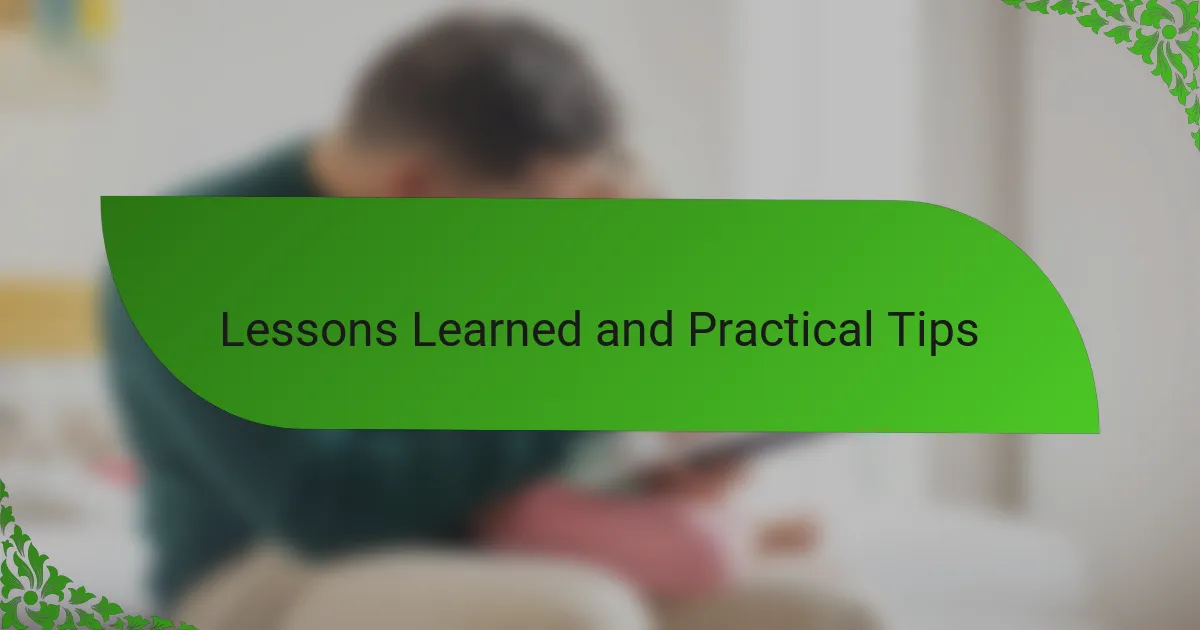
Lessons Learned and Practical Tips
Reflecting on my journey through Kant’s Critique, one key lesson I learned was the importance of patience and persistence. Kant doesn’t reveal his insights quickly, so allowing myself the time to sit with difficult passages—not rushing—helped me absorb ideas more deeply. Have you ever found that stepping back from a tough text actually brings the aha moment you were chasing? For me, those pauses made understanding feel like a personal achievement rather than a chore.
Another practical tip I’d share is to relate Kant’s abstract notions to everyday experiences. When I pictured the mind as a kind of filter or organizer—like a photographer choosing what to focus on—the concepts suddenly became less intimidating and more alive. Creating vivid mental images or analogies helped me stay engaged and made tricky ideas stick. Don’t you find that when philosophy connects to your own life, it stops feeling so distant?
Lastly, discussing Kant’s ideas with others transformed my learning completely. Talking through my confusions and hearing different viewpoints broke the isolation I felt in front of the text. It reminded me that philosophy is as much a conversation as it is reading. Have you ever noticed how sharing your thoughts can uncover insights you’d never reach alone? Those moments of exchange weren’t just helpful—they made Kant’s Critique feel like a shared adventure.